
Traveling through Egypt is like stepping into a living museum, offering one of the closest encounters with the ancient world that you can physically experience. This country holds within its borders some of the most iconic, well-preserved temples and tombs in existence. The landscapes are stunning, and the culture has evolved over millennia, tightly intertwined with the mighty River Nile, creating a civilization as enduring as the desert sands.
If you’ve got two weeks, this Egypt itinerary will guide you to the greatest highlights—the must-see wonders that define Egypt.
In this two weeks in Egypt adventure, you’ll stand before Egypt’s most legendary monuments, from the towering Great Pyramid of Giza to the ancient Step Pyramid of Djoser in the north. In the south, you’ll marvel at the vast Karnak temple complex and the awe-inspiring Abu Simbel. You’ll explore the vivid tombs in the Valley of the Kings, sail along the serene Nile at sunset in Aswan, and soak in Egypt’s timeless beauty aboard a classic Nile River cruise.
Once you’ve experienced Egypt in this way, there’s no doubt that it will leave its mark on you too, calling you back for more.
Table of Contents
What’s the Route?

- This two-week Egypt journey starts with a few days in Cairo, where you’ll explore the famous Pyramids of Giza, historic landmarks, and museums. After that, you’ll take a trip south to the Necropolis of Saqqara and head north to the ancient city of Alexandria, rich with history and culture.
- Next, you’ll hop on the overnight train heading down to Aswan. Here, you’ll visit incredible sites like the Temple of Philae and the Unfinished Obelisk. You’ll also take a day trip to the stunning Abu Simbel temples, which are a true wonder.
- From Aswan, you have the choice to spend the next few days on a Nile Cruise, where you’ll drift through stunning landscapes, heading north, stopping at timeless temples along the way, like Kom Ombo and Edfu, before arriving at Luxor. In Luxor, you’ll be amazed by Karnak Temple and the Valley of the Kings. Alternatively, if cruising isn’t your thing, you can travel overland between Aswan and Luxor instead.
- You’ll wrap up your itinerary with a couple of days exploring the many other treasures around Luxor before your journey comes to an end in this breathtaking Nile-side city.
If You Have Less Time
- If your schedule is tight and you only have a week in Egypt, we suggest focusing on Cairo and Luxor.
- Spend a couple of days in each, fly between the two, and maybe squeeze in a day trip to Abu Simbel if time allows.
If You Have More Than Two Weeks

- With extra time, why not go deeper into Egypt? Consider a longer, more immersive Nile Cruise, such as this 4-day dahabiya cruise. These smaller boats can stop at places the larger cruise ships can’t, giving you the chance to explore hidden ancient sites and small villages along the Nile. It’s one of our absolute favorite experiences in Egypt.
- If you want to add a longer cruise to your two-week itinerary, you could shorten your stay in Cairo or skip Alexandria entirely to fit it in.
- For those lucky enough to have three weeks or more, you might want to add a two-day trip to the Bahariya Oasis and White Desert, leaving from Cairo. Another great option is to fly from Luxor to one of Egypt’s Red Sea resorts, such as Hurghada, Sharm el-Sheikh, or our personal pick, the serene diving village of Dahab on the Sinai Peninsula.
Safety in Egypt

- Safety is always a big question when planning a trip to Egypt. Tourism is vital to the country’s economy, so the government takes security very seriously. You’ll likely notice a visible military and police presence, especially at popular tourist spots.
- Throughout our many visits, including during some more challenging times, we’ve never felt unsafe. But, like any destination, it’s always a good idea to stay updated on the latest news before you travel.
Day 1 – Arrival in Cairo
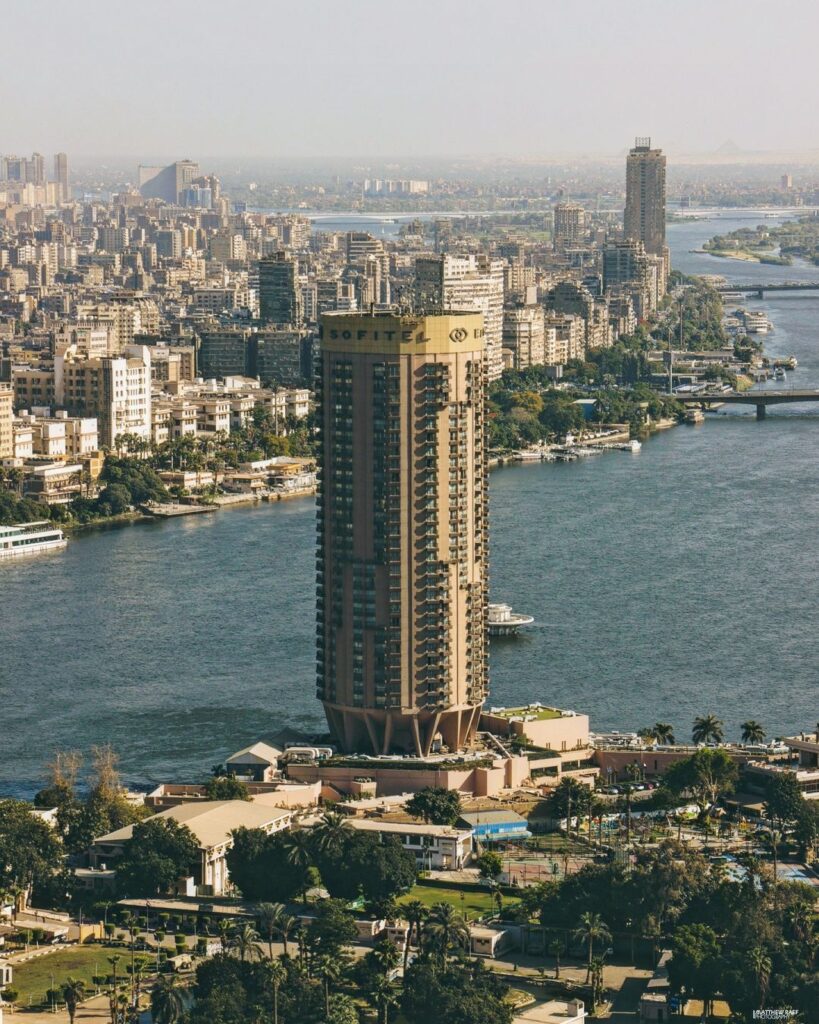
Key highlight: Pyramids Sound & Light Show
Stay overnight: Cairo
- After landing at Cairo International Airport, you’ve got a few options to reach your hotel—whether by public bus, taxi, Uber, or private transfer for a 25-kilometer (15.5-mile) journey. We suggest you go for the private transfer—it’s pricier, yes, but when you’re in a new country, getting hit by relentless taxi drivers can be overwhelming. Book the transfer through your hotel to have someone waiting for you at arrivals.
- Travel Tip: If you’re depending on Wi-Fi for directions, get offline maps of Cairo, Luxor, and Aswan on Google Maps before you arrive. Speaking from experience—after a lovely local helped us find our lost way on day one—offline maps are a lifesaver.
- If your flight comes in the afternoon, don’t rush. Cairo’s notorious traffic means it could take an hour to reach your hotel, so rest up. But if you land in the morning and have energy, peek at Day 3 for places to explore.
- If you’ve got an evening free, check out the Pyramids Sound & Light Show. It’s on at 7:30 pm from Wednesday to Saturday. You can grab tickets here.
Where to stay in Cairo
Your stay depends on what you want to see and your budget. Here are the main areas:
- Downtown Cairo: Close to the Egyptian Museum, Tahrir Square, and short drives to sights like Coptic Cairo and the Citadel. It’s budget-friendly too.
- Garden City: A more posh district south of Downtown, home to beautiful architecture and Nile-side hotels.
- Giza: Wake up to pyramid views, but it’s far from Cairo’s other attractions. It’s a good spot for pyramid lovers, and with the Grand Egyptian Museum opening in Giza soon, it’s only going to get better.
- Zemalek: A classy neighborhood on an island in the Nile. Known for embassies, expats, and a fantastic dining scene.
We recommend you to stay Downtown. It’s a good base, though basic. Here are some options with rave reviews:
- Budget (Downtown): Tahrir Square Hostel
- Mid-range (Garden City): Kempinski Nile Hotel
- Luxury (Giza): Marriott Mena House
- Bonus Budget (Giza): Sunrise Pyramids View Inn
Day 2 – Giza Pyramids & Egyptian Museum
Key Highlights: Pyramids of Giza | Great Sphinx | Egyptian Museum at Tahrir Square
Stay overnight: Cairo
Pyramids & Great Sphinx

- Set your alarm early—Giza’s pyramid complex opens at 8 am in winter and 7 am in summer. Beat the crowds and the heat by arriving as soon as the gates open.
- You can join a guided tour or grab a cab and explore on your own. There are two entry points: one near the Great Pyramid and another by the Sphinx. The Sphinx entrance is quieter but comes with a 3 km (1.9 miles) uphill walk to the Great Pyramid. Still, it’s worth it for that iconic Sphinx shot.
- There’s much more to Giza than just the pyramids, so plan to spend 3 to 4 hours. See the pyramids of Khufu, Khafre, and Menkaure (you can even go inside one for an extra fee). Don’t miss the Queen’s Pyramids, Worker’s Village, smaller temples, and of course, the Great Sphinx.
- The famed Solar Boat of Khufu, previously on display near the Great Pyramid, has moved to the Grand Egyptian Museum.
| Travel Tip: Giza is prime territory for hassle. You’ll face touts pushing everything from camel rides to photo ops. Plan ahead. If you’re not buying or riding, say “no” firmly at the start to avoid a relentless entourage. Nothing is free—remember that! |
Egyptian Museum
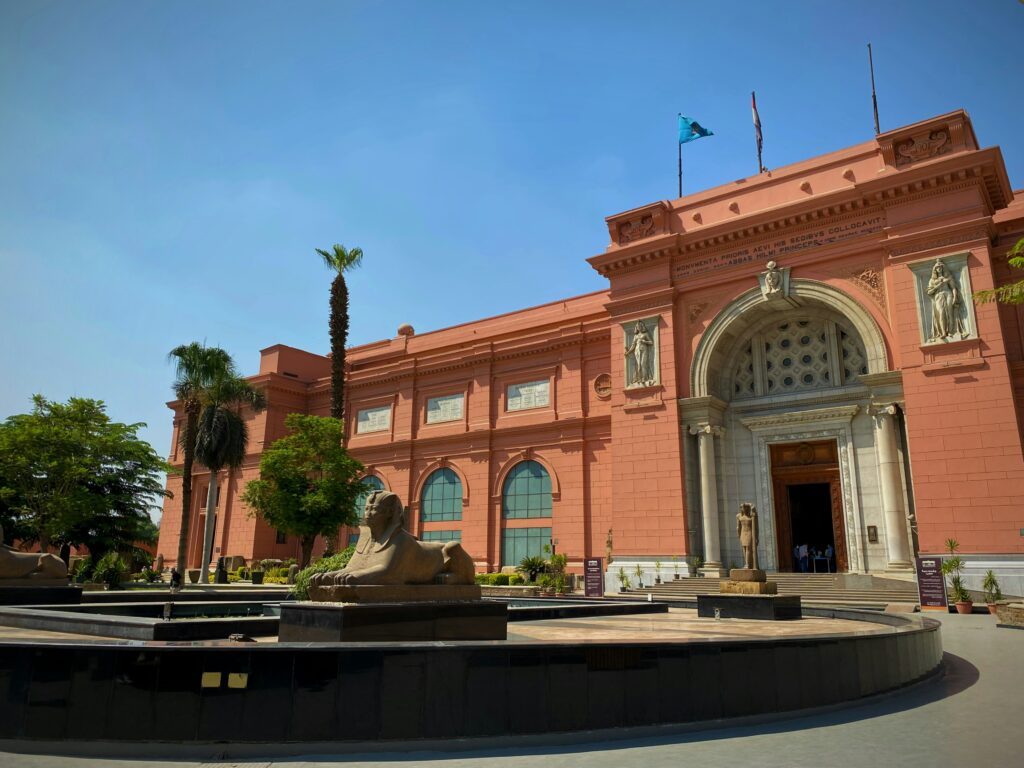
- The Egyptian Museum showcases artifacts from ancient Egypt through Roman times.
- Inside, you’ll find the golden mask of a pharaoh, royal mummies, and other treasures.
- The building is brick-red with two floors, and the entrance design reflects ancient Egyptian art, with a circular arch and reliefs of pharaohs holding symbols of northern and southern Egypt.
- On the first floor, exhibits are arranged chronologically, displaying relics from the time of the ancient kings to Roman rule. You’ll find statues, wood carvings, and stone carvings from Egypt, Greece, and Rome. The second floor features special exhibits, including Tutankhamun’s treasures such as his golden mask, coffin, and throne. Over 1,700 artifacts from his tomb are on display.
- A highlight of the museum is the Mummy Showroom, where over 20 royal mummies are displayed. Among them is the well-preserved Ramses II, known for his peace treaty with the Hittites.
- The museum garden also contains statues of famous Egyptologists and outdoor artifacts like sphinxes and obelisks.
- As you exit, a statue of the museum’s founder stands by the gate.
Day 3 – Cairo’s Treasures
Key Highlights: Royal Mummies at NMEC | Cairo Citadel | Coptic Cairo | Khan el-Khalili Bazaar
Stay overnight: Cairo
Many see Cairo as just a layover on the way to Egypt’s ancient wonders. But this city’s packed with gems. Day 3 is all about uncovering more Cairo highlights—and yes, royal mummies!
Today you’ve got four must-visit places. You can visit them all in a day with a guided tour, or pick two or three if you’re doing it solo.
Morning
National Museum of Egyptian Civilisation (NMEC)
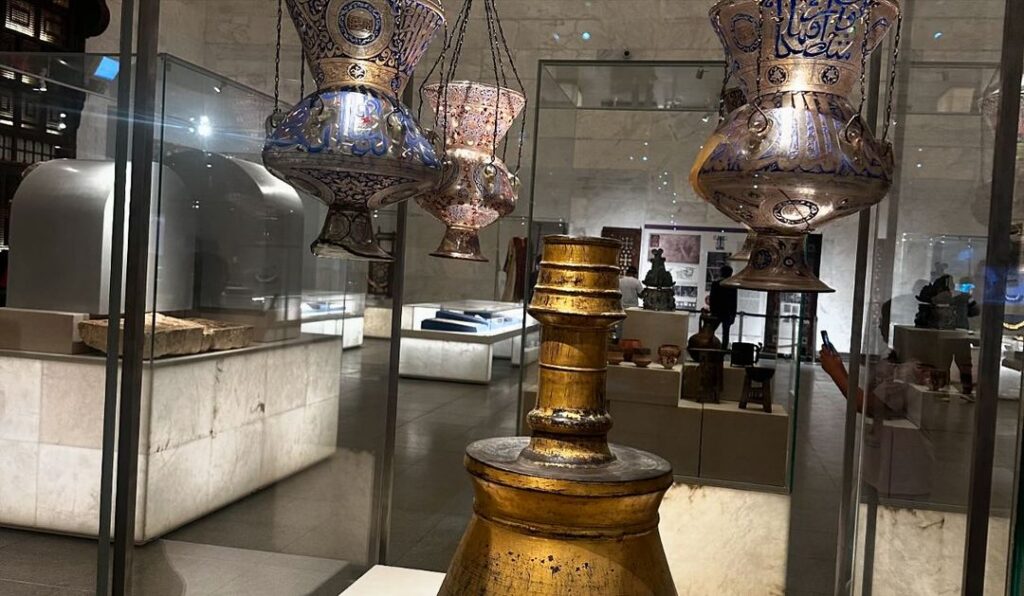
- After the Egyptian Museum yesterday, you might not be in a rush to hit another. But the NMEC is a must—not just for its timeline through Egypt’s history, but because it’s where the Royal Mummies now rest, including Ramses II, Queen Hatshepsut, and King Seti I.
- These famous mummies were relocated here in a grand parade in 2021, and their temples and tombs await you down south in Luxor and Aswan.
- NMEC is open daily from 9 am to 5 pm, and from 6 pm to 9 pm on Fridays.
Coptic Cairo

- One of the oldest parts of Cairo, this peaceful neighborhood has been the heart of Egypt’s Christian community since the 4th century. Explore the Hanging Church, the Church of Saints Sergius and Bacchus, and more.
- There’s also the Coptic Museum, the Greek Orthodox Church of St George, and the Mosque of Amr ibn al-As—the oldest mosque in Egypt.
Cairo Citadel

- Built in the 12th century by Saladin, the Citadel looms above the city from the Mokattam Hills. Inside, the Ottoman-style Mosque of Mohammed Ali and the views over Cairo will blow you away. It’s a bit of a walk uphill, but worth it.
- The Citadel is open daily from 8 am to 5 pm
Khan el-Khalili Bazaar

- This souq has been buzzing for over 600 years, offering everything from souvenirs to spices. It’s a sensory overload and an experience you won’t forget.
- Even if you’re not shopping, you grab tea with a local.
- Hours vary, but it’s usually open from 9:30 am until late.
Day 4 – Day Trip to Alexandria

Key Highlights: Catacombs of Kom ash-Shuqqafa | Kom el-Dikka | Pompey’s Pillar | Bibliotheca Alexandrina | Fort Quaitby | Corniche Walk
Stay overnight: Cairo (or Alexandria)
- Leave Cairo for the Mediterranean coast and head to Alexandria, founded by Alexander the Great in 331 BC. This legendary city, once home to the famed Lighthouse of Alexandria and its great library, still echoes its ancient glory.
- While you could join a day tour to Alexandria, it’s easy to do it on your own. You can take the train from Ramses Station in Cairo to Misr Station in Alexandria (3-4 hours), then grab taxis to explore the sites. Pro tip: get an early train so you have time to cover it all.
- Explore the underground Catacombs of Kom ash-Shuqqafa, the Roman amphitheater at Kom el-Dikka, Pompey’s Pillar, and the Serapeum.
- Don’t miss the stunning modern Bibliotheca Alexandrina, a tribute to the ancient library, or the Fort Quaitby on the site of the Lighthouse of Alexandria.
- End your visit with a peaceful walk along the Corniche before heading back to Cairo. Or stay overnight and head back early tomorrow.
- For something different, skip Alexandria and head into the desert for a 2-day tour to the Bahariya Oasis and the surreal Black and White Deserts. You’ll be blown away by the wild landscapes and get to camp out under the stars.
Day 5 – Memphis, Dahshur & Saqqara
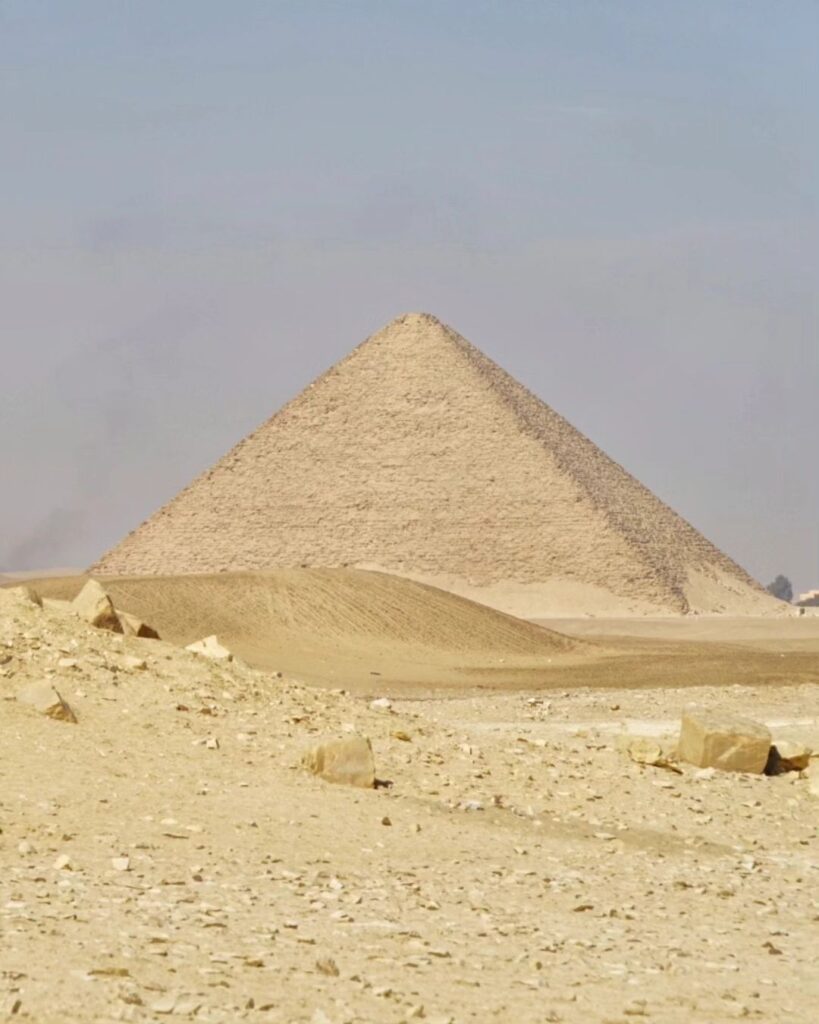
Highlights: Colossal Statue of Ramses II | Red & Bent Pyramids of Dahshur | Step Pyramid of Djoser
Overnight: Sleeper train to Aswan
Morning and Afternoon
- Today head south of Cairo to explore Egypt’s early pyramids and temples on an adventure to Memphis, Dahshur, and Saqqara.
- You can arrange for a cab driver to take you around for half a day. This trip can also be done as part of a guided half-day or full-day tour from Cairo.
- While the Giza pyramids steal the spotlight, many more pyramids lie scattered across the desert to the south, reaching beyond the ancient city of Memphis. Once Egypt’s capital during the Pharaonic age, today little remains of Memphis except a dusty outdoor museum featuring the incredible Colossal Statue of Ramses II. The sheer size and craftsmanship of this fallen giant make the visit to Memphis worthwhile.
- Just 10 kilometers (6 miles) south of Memphis, you’ll find the Red and Bent Pyramids of Dahshur, which represent the transition from earlier step pyramids to the first ‘true’ pyramid.
- The day’s highlight, however, is undoubtedly the vast Necropolis of Saqqara, a burial ground in use for over 3,000 years. With so much to see, it’s a good idea to come prepared with a guidebook or hire a guide.
- The crown jewel of Saqqara is the Step Pyramid of Djoser, Egypt’s oldest pyramid and the world’s first, marking the beginning of pyramid-building.
- Other must-see sights in Saqqara include the Imhotep Museum, the Pyramid of Unas with its inscribed walls, the Serapeum where sacred Apis bulls were buried, and the mastaba tombs of Kagemni and Ti.
Evening
- Tonight, bid farewell to Cairo and board the sleeper train to Aswan. While flying is an option, taking the sleeper train adds a unique dimension to the journey. Plus, you get to cover a lot of ground while you sleep.
- The sleeper train departs from Ramses Station in Cairo between 7 pm and 8 pm, making a quick stop at Giza Station before continuing south. The trip to Aswan takes 13 to 14 hours, stopping briefly in Luxor along the way.
- If you’re planning this trip, book your tickets early through this site or at the station.
Day 6 – Aswan Sightseeing
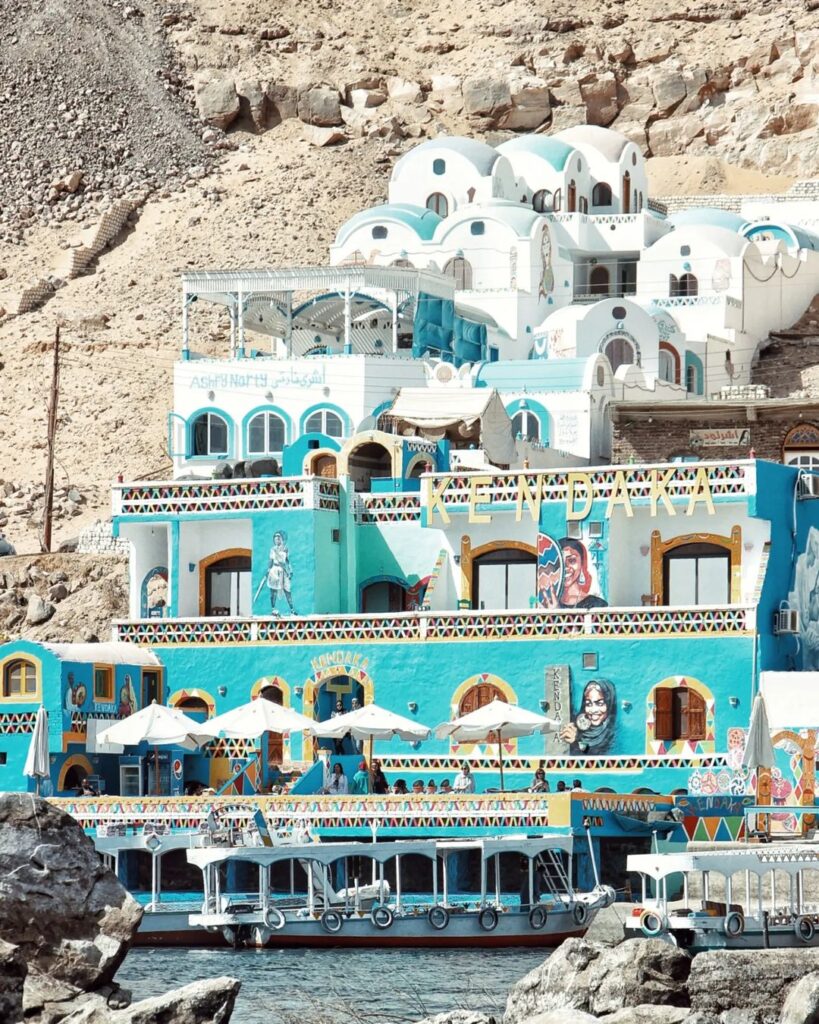
Highlights: Nubian Museum | Elephantine Island | Sunset Felucca Sail
Overnight: Aswan
Aswan, Egypt’s southernmost city, is a treasure trove of history. It was once a major trading hub on the caravan route into Africa and a key military post for ancient Egypt. Aswan stretches along the Nile, making it a fantastic spot to unwind by or on the river.
- Assuming the train runs on time, you’ll arrive in Aswan between 8 am and 9 am. After dropping your bags at the hotel and freshening up, it’s time to start exploring.
- Suppose you’re booked on a Nile cruise. In that case, you’ll board tomorrow, with many cruise itineraries including an afternoon tour of Aswan’s main attractions like the High Dam, the Temple of Philae, and the Unfinished Obelisk. Since you’ll be doing that tomorrow, today is perfect for exploring some of Aswan’s other gems.
Morning
Nubian Museum
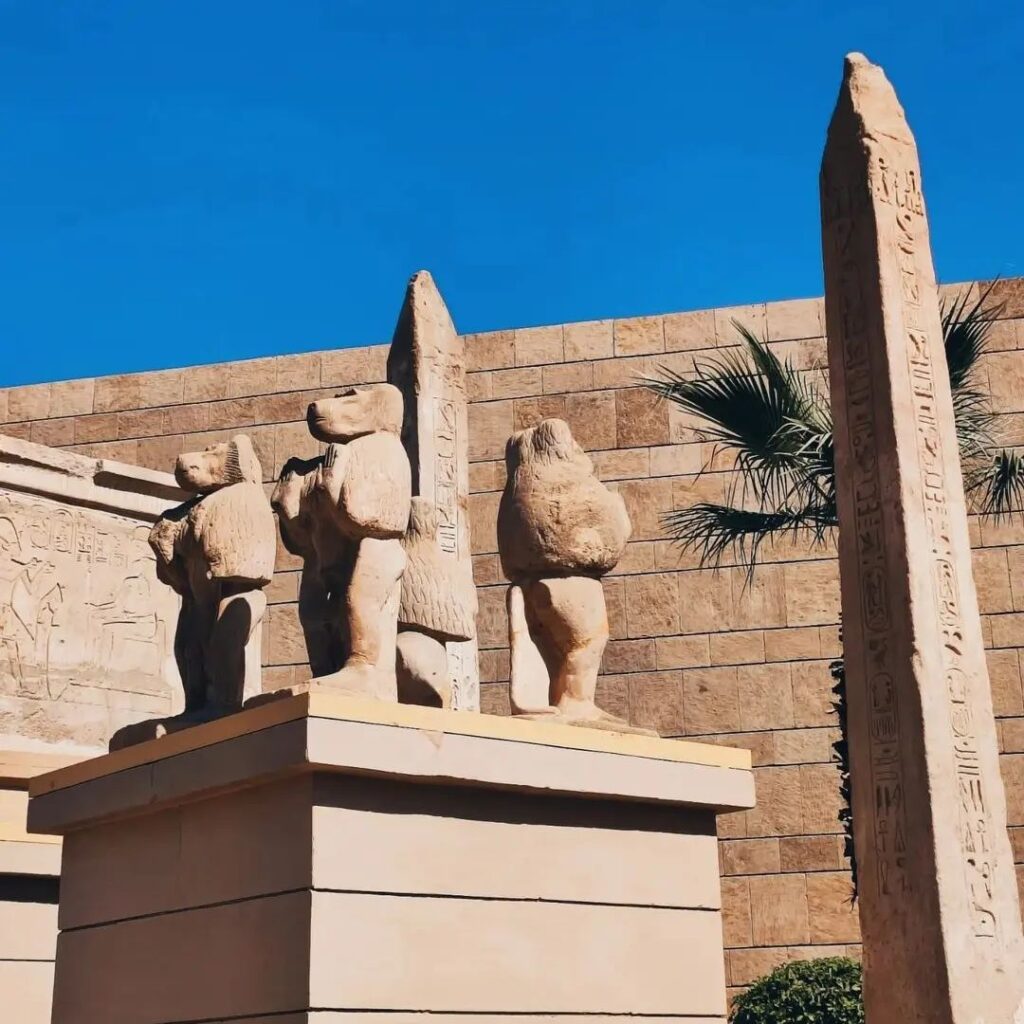
- Spend a couple of hours at the incredible Nubian Museum, which takes you through 6,500 years of Nubian history.
- This museum is a highlight, offering valuable insights into the ancient Nubian civilization that flourished in the region.
- The exhibits also shed light on the massive 1960s effort to save Nubia’s historical sites and monuments from being submerged by the creation of Lake Nasser.
Afternoon
Elephantine Island
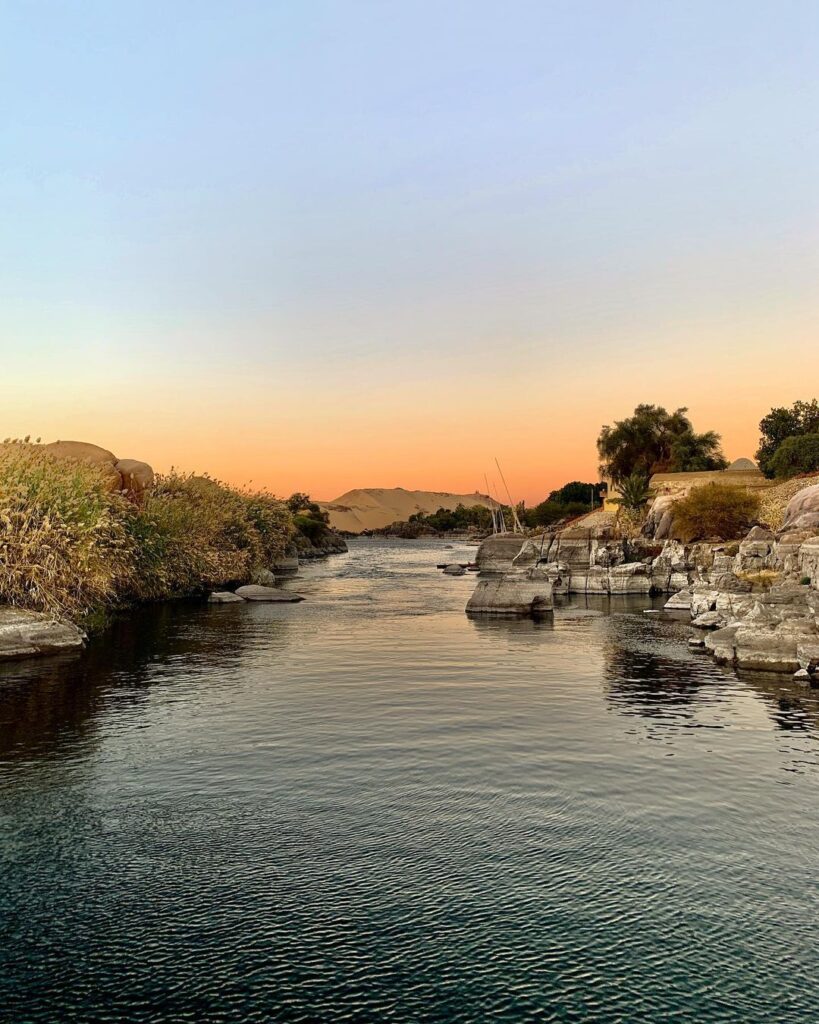
- A short and affordable public ferry ride from Aswan takes you to Elephantine Island, located in the middle of the Nile.
- The southern part of the island holds the Ruins of Yebu, part of the Nubian Monuments World Heritage site. Here, you’ll find the Temples of Khnum and Satet, along with a stunning viewpoint.
- One of the most fascinating spots on Elephantine Island is the Nilometer, used in ancient times to measure the Nile’s water levels and predict the annual flood, which determined tax rates.
Sunset
Felucca Sail
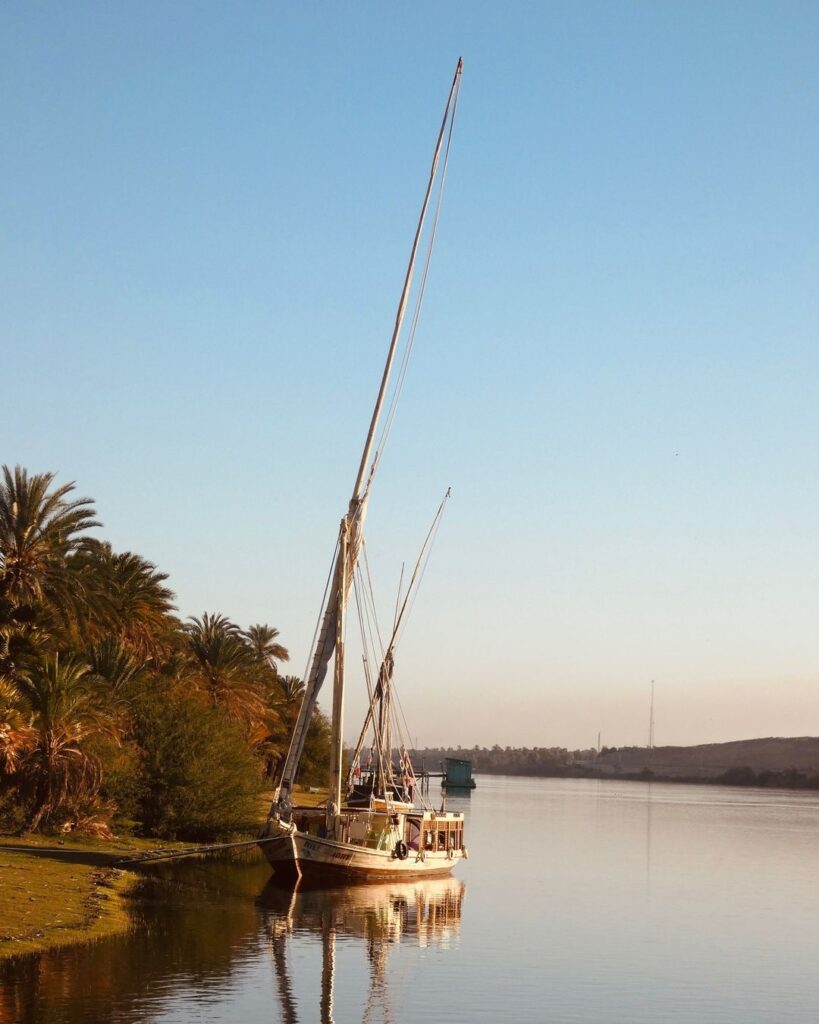
- Aswan is hands down the best place in Egypt to enjoy a sunset felucca ride. Feluccas are traditional, small sailing boats with canvas sails, offering a peaceful way to glide along the Nile. You might also find feluccas in Cairo and Luxor, but if you only do it once, do it in Aswan.
- Negotiating a felucca ride can be a bit tricky. To avoid any surprises, it’s best to arrange your sunset sail through your hotel or book full day felucca sail here.
Where to Stay in Aswan
Most accommodations are located along the Nile Corniche on the east bank, while Elephantine Island offers a quieter, budget-friendly option.
- We recommend staying at the Obelisk Nile Hotel Aswan, a mid-range hotel with a lovely terrace that’s perfect for a sunset drink.
- If you’re looking to splurge, the Sofitel Legend Old Cataract is a great option.
Day 7 – Abu Simbel
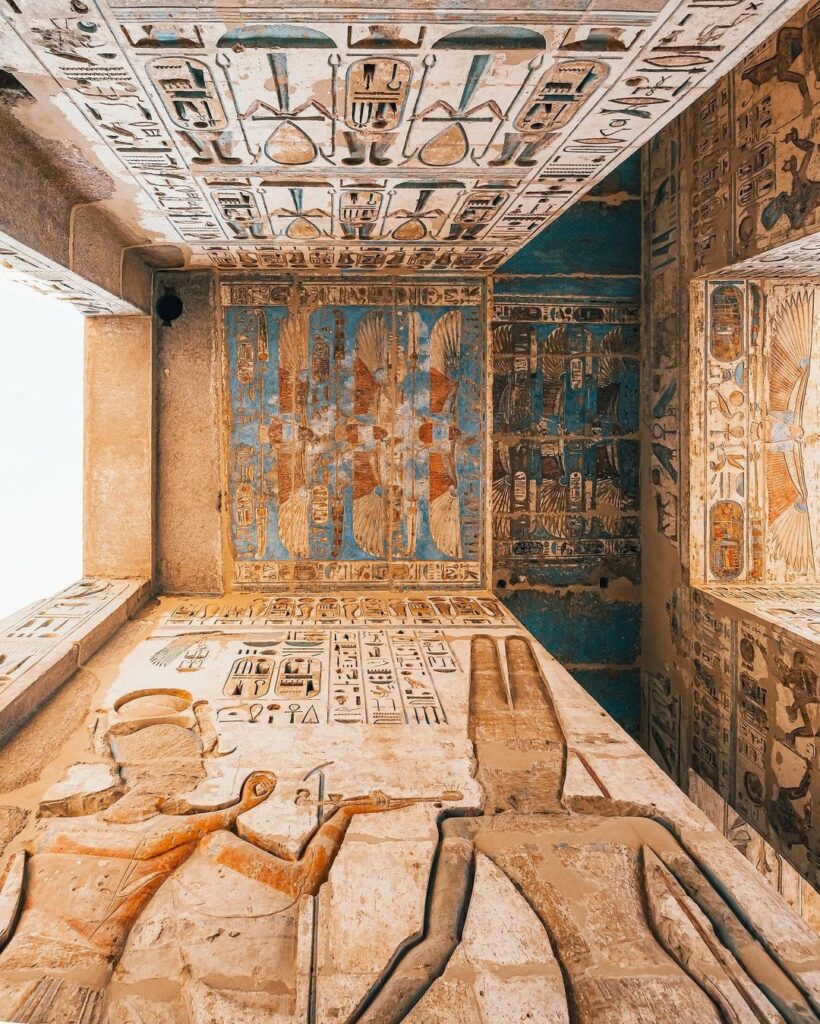
Highlights: Great Temple of Ramses II | Temple of Hathor
Overnight: Aswan
Although it requires a full day, the journey to Abu Simbel is worth every minute. This World Heritage site is on par with the Pyramids of Giza and the Karnak Temple as one of Egypt’s most awe-inspiring landmarks. The modern story of Abu Simbel is just as fascinating.
- To visit Abu Simbel, you have two options: road or plane.
- One option is the 3-hour, 300-kilometer (186-mile) road trip, and you can arrange it through your hotel.
- Alternatively, you can fly to Abu Simbel. While more expensive, the flight takes only about 45 minutes each way. Make sure to book a flight that allows you at least two hours at the site, and plan for a total of 7 to 8 hours, including flight time and transfers.
Temples of Abu Simbel
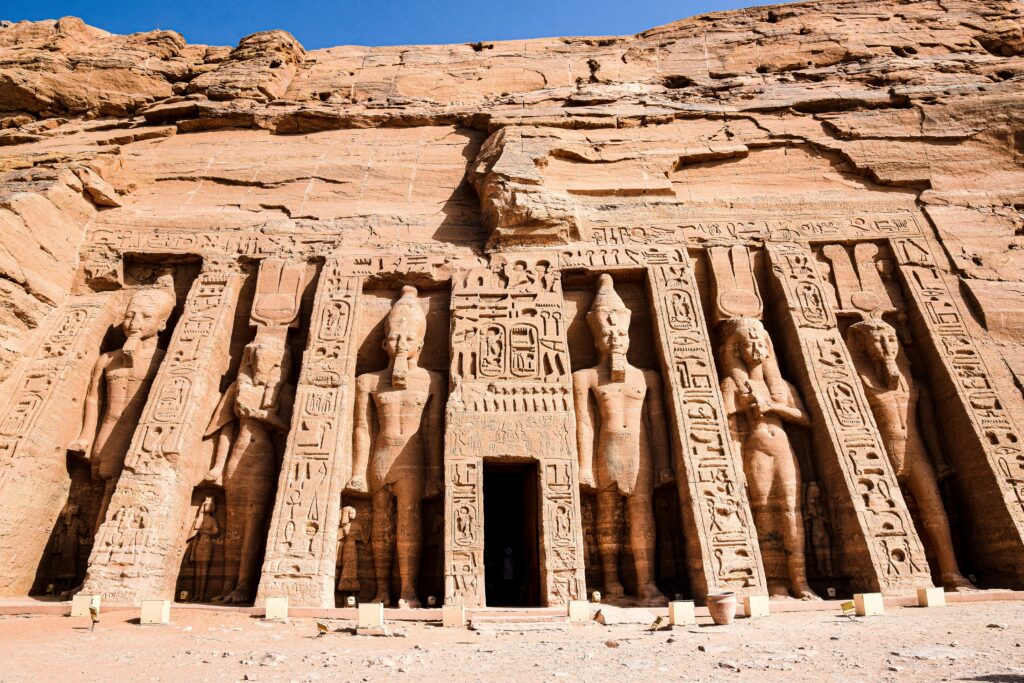
- The two rock-cut temples here are among Egypt’s finest. The larger one, the Great Temple of Ramses II, features four colossal seated statues guarding the ancient southern frontier of his kingdom. Nearby, the Temple of Hathor showcases statues of Ramses and his wife, Queen Nefertari.
- These temples, built in the 13th century BC, were saved from flooding when the Aswan High Dam was constructed in the 1960s. Engineers dismantled the temples, moved them, and reassembled them on higher ground, a mind-boggling feat of modern engineering.
Days 8 to 11 – Nile Cruise from Aswan to Luxor

Just about every traveler to Egypt will consider a Nile cruise, and for good reason. Along the stretch between Aswan and Luxor, you’ll see boats of all sizes—everything from feluccas and traditional dahabiya vessels to larger river cruise ships.
Nile cruises can last anywhere from three to seven nights, depending on your preference. The length of your cruise, the type of boat you choose, and the itinerary will determine which ancient sites you visit. Larger cruise ships usually stop at famous temples like Kom Ombo and Edfu, though they often spend their first and last nights docked near Luxor and Aswan, surrounded by other tourist boats.
- For this two-week Egypt itinerary, we’ve planned a typical 4-day, 3-night Nile cruise. This gives you enough time to soak in the wonders of the Nile while ensuring you see all the essential sites in Cairo, Alexandria, and Luxor.
- If you’re not interested in a cruise, you can replace this leg of the journey with overland travel by car or train between Aswan and Luxor. If so, spend an additional night in Aswan and two more in Luxor. If you arrange a car and driver for Day 9, you can visit the Temples of Kom Ombo and Edfu on your way to Luxor.
Day 8 – Nile Cruise with Aswan Sightseeing

Highlights: Aswan High Dam | Unfinished Obelisk | Temple of Philae
Overnight: On board Nile cruise (or Aswan if you’re overlanding)
You’ll board your Nile cruise in Aswan today. A typical 4-day, 3-night cruise includes guided tours of several important sites in and around Aswan, such as the Aswan High Dam, the Temple of Philae, and the Unfinished Obelisk.
If your cruise doesn’t include a visit to these sites, consider adjusting Day 6 to include the Temple of Philae, the Unfinished Obelisk, and the Nubian Museum.
Unfinished Obelisk
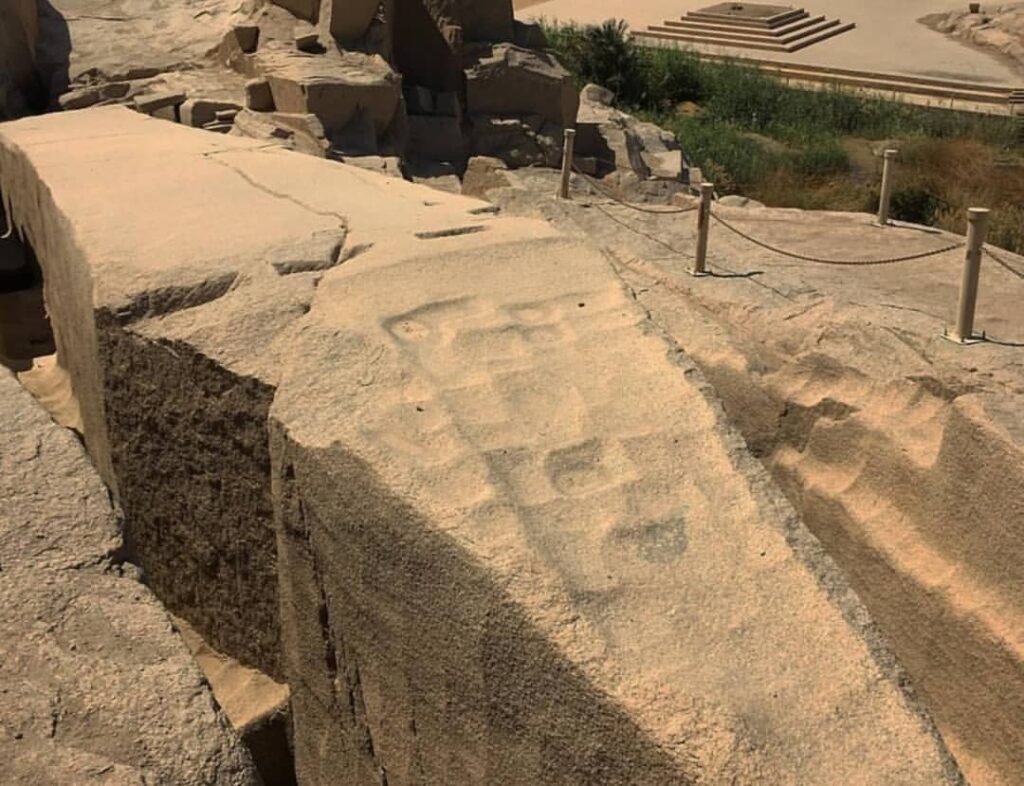
- This enormous pink granite obelisk was abandoned due to a crack discovered during its creation over 3,500 years ago. It’s one of the largest obelisks ever attempted in Egypt.
Temple of Philae
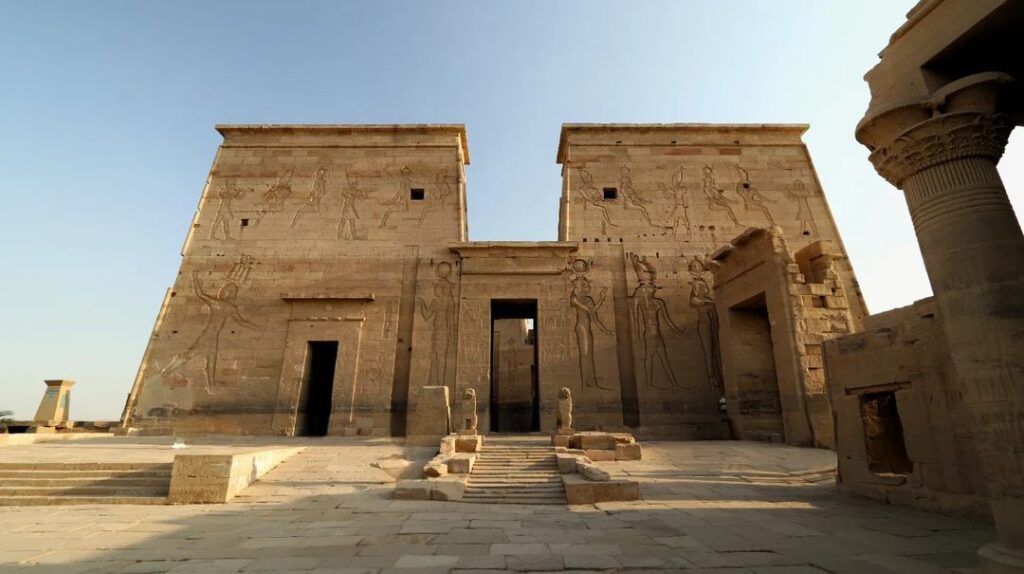
- Originally located near the First Cataract of the Nile, this beautiful temple was moved to higher ground on Agilkia Island in the 1960s to protect it from flooding after the construction of the Aswan High Dam.
- Approaching the temple by boat is an unforgettable experience.
Day 9 – Nile Cruise & Kom Ombo
Highlights: Nile Cruising | Temple of Kom Ombo | Crocodile Museum
Overnight: On board Nile cruise (or Luxor if overlanding)
- Today, you’ll sail along the lush green banks of the Nile, with stunning desert scenery in the background as you head toward the Temple of Kom Ombo and later Edfu.
- If you’re not on a cruise, arrange for a car and driver to take you from Aswan to Luxor, stopping at the temples of Kom Ombo, Edfu, and possibly the Temple of Khnum at Esna along the way.
Temple of Kom Ombo

- This unique temple is dedicated to two gods, with its structure symmetrically divided. The left side honors Haroeris (Horus the Elder), while the right side is devoted to Sobek, the crocodile god.
- Don’t miss the Crocodile Museum, where you can view mummified crocodiles found at the site.
Day 10 – Nile Cruise, Edfu & Luxor East Bank
Highlights: Nile Cruising | Temple of Edfu | Temples of Karnak | Luxor Temple by Night
Overnight: On board Nile cruise (or Luxor if overlanding)
- Many Nile cruises will dock overnight at Edfu, allowing you to explore the Temple of Horus early in the morning before continuing on to Luxor. In Luxor, you’ll visit two of Egypt’s most incredible temples: Karnak and Luxor Temple.
- If you’re overlanding, you’ll have already visited Edfu and will now have a full day in Luxor.
Temple of Edfu
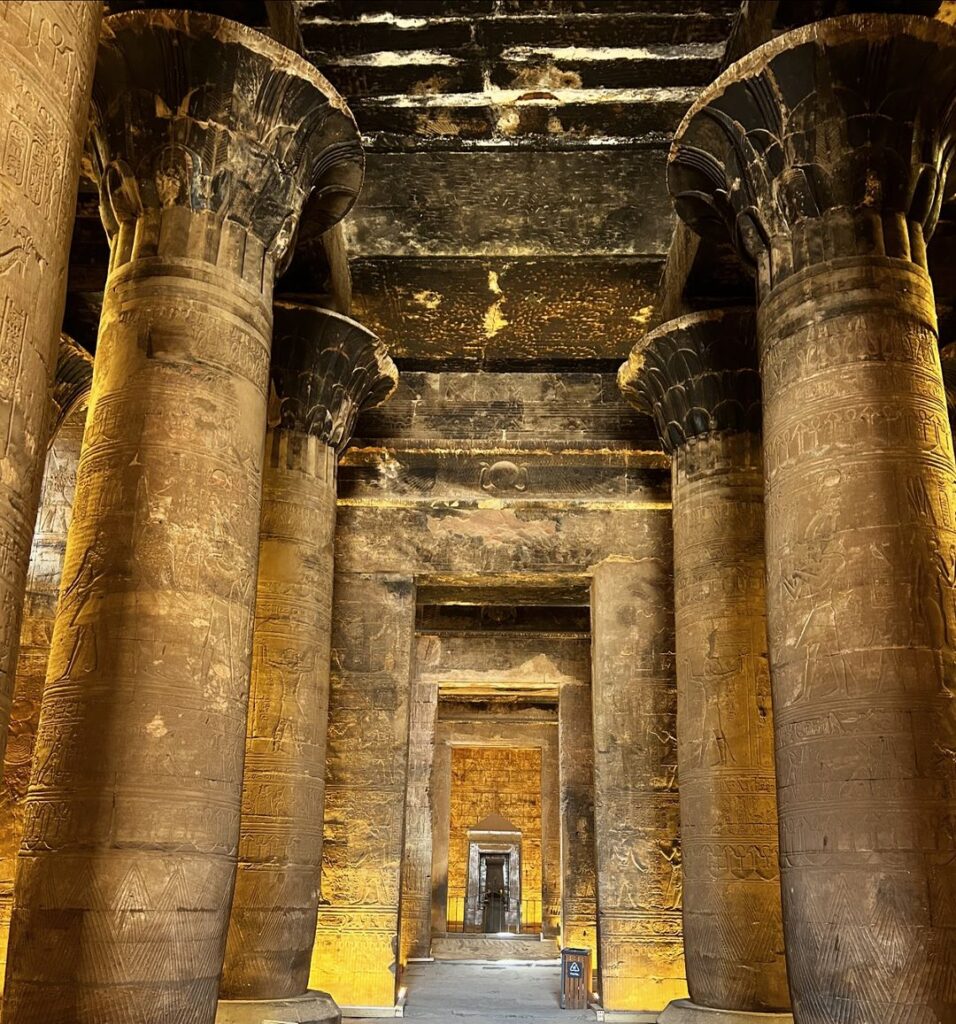
- This well-preserved temple was built by the Ptolemaic pharaohs and features stunning reliefs of Pharaoh Ptolemy XII, showing him vanquishing his enemies before the falcon-headed god Horus.
Temples of Karnak

- One of Egypt’s most iconic landmarks, Karnak was the largest religious complex ever built. It served as the heart of worship for over a thousand years.
- A guided tour will help you navigate its colossal statues, towering columns, and the Avenue of Sphinxes.
Luxor Temple
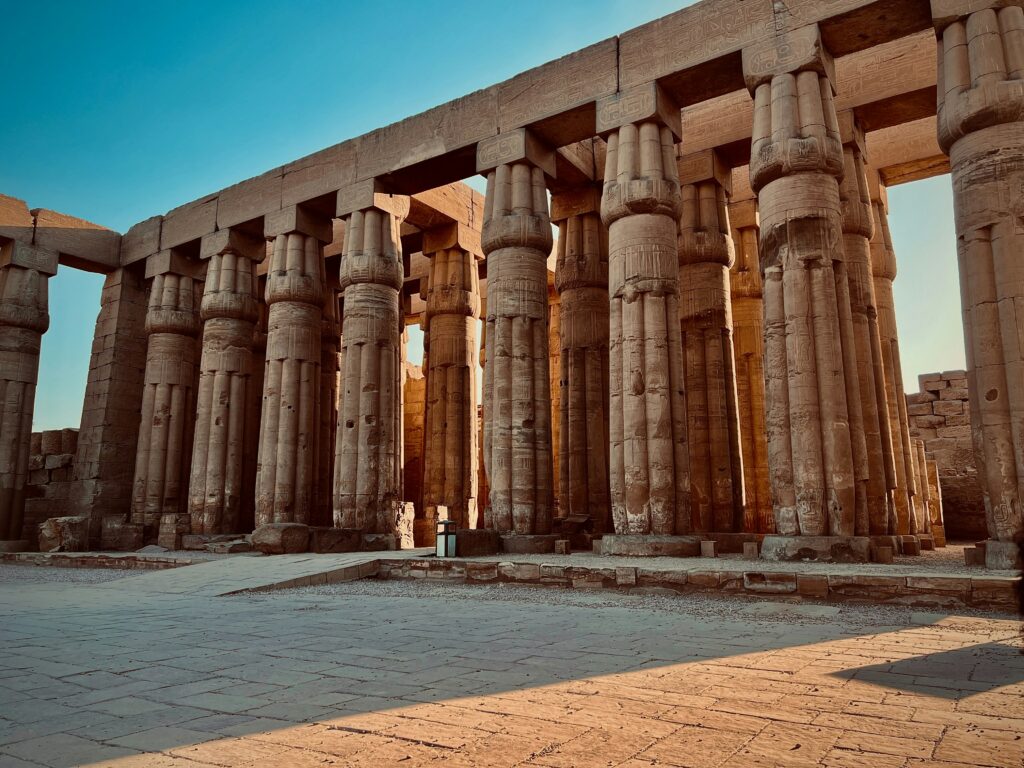
- This striking New Kingdom sanctuary comes alive at night when it’s beautifully lit up.
- With its grand colonnades and statues, Luxor Temple is a must-see, particularly during the evening when it exudes a magical atmosphere.
Day 11 – Nile Cruise & Luxor West Bank
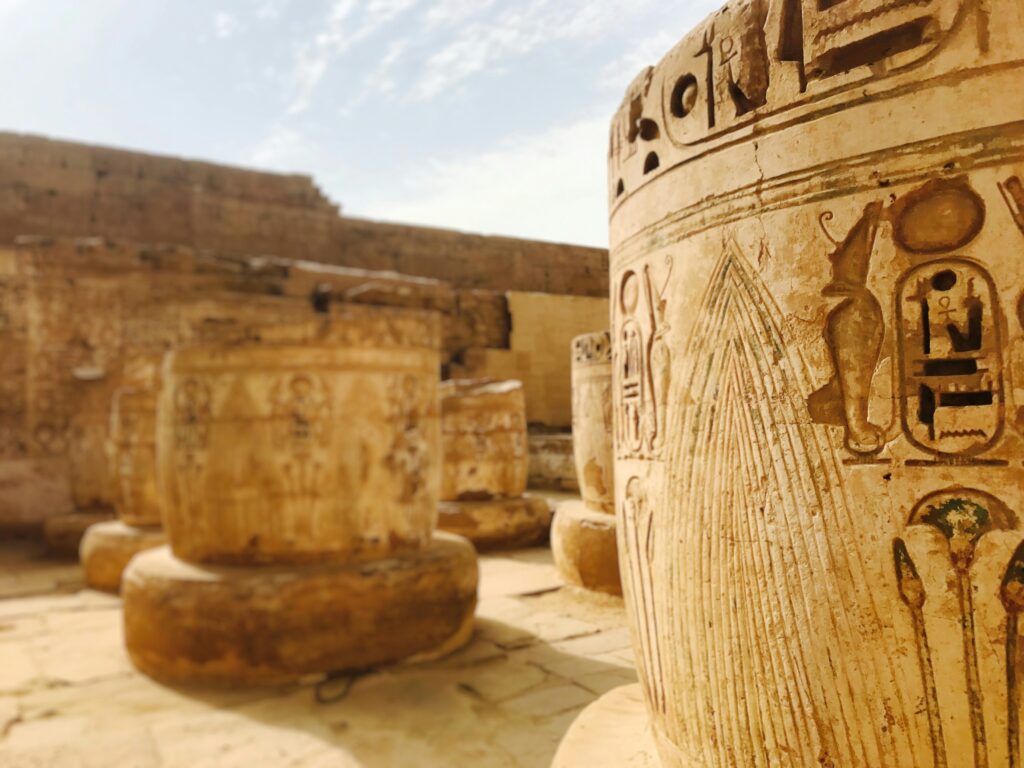
Highlights: Valley of the Kings | Temple of Hatshepsut
Overnight: Luxor
- For most travelers, the 4-day Nile cruise concludes today after breakfast, often including a guided tour of Luxor’s West Bank.
- If you haven’t taken a cruise, this will be your second full day in Luxor, and you’ll visit the same famous sites.
Valley of the Kings
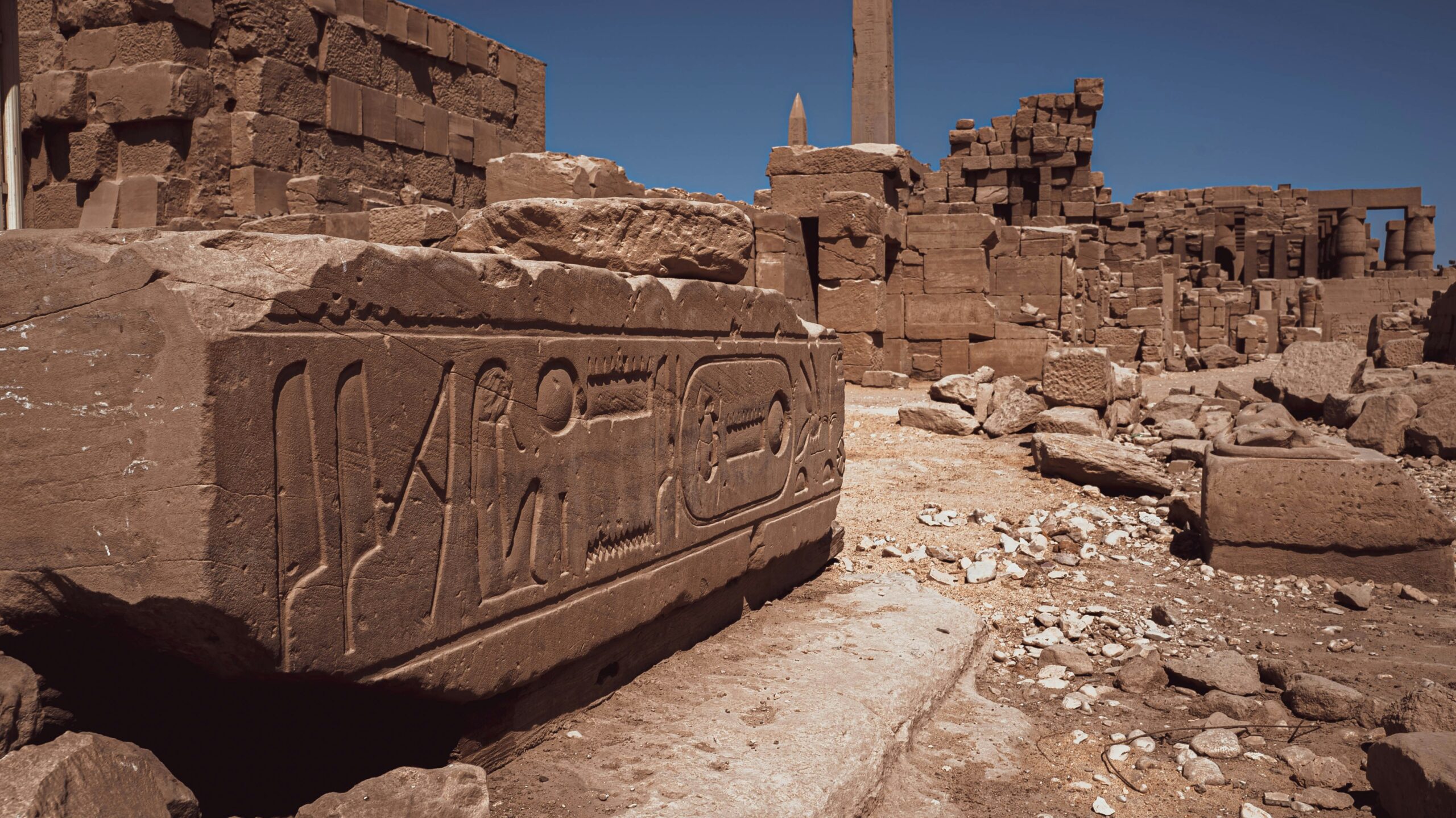
- On the surface, the Valley of the Kings is barren, dusty, and dry, but beneath the earth lies an incredible array of tombs filled with vibrant artwork. This is where the pharaohs of the New Kingdom constructed their elaborate portals to the afterlife. Over 65 tombs have been discovered here, and although most were plundered long ago, their breathtakingly colorful decorations remain.
- A standard ticket grants entry to three tombs from the open list during your visit. Additionally, special tickets are required for certain iconic tombs, such as Tutankhamen (KV62), Seti I (KV17), and Ramesses V & VI (KV9). We highly recommend purchasing tickets for Seti I and/or Ramesses V & VI, as they were our personal favorites.
Mortuary Temple of Queen Hatshepsut

- Nestled against the towering cliffs at Deir el-Bahri, the Mortuary Temple of Hatshepsut looks almost modern, but it’s over 3,500 years old. Egypt’s most famous female pharaoh designed her temple to stand apart from other ancient structures, and it’s a remarkable place to visit.
- However, be prepared for extreme heat, and if you’re visiting independently, tickets can be purchased at the site.
Where to Stay in Luxor
Most visitors choose to stay on the East Bank, near the temples of Karnak and Luxor.
However, the West Bank is quieter, greener, and more atmospheric. It’s closer to ancient sites like the Valley of the Kings, and staying here offers a unique sense of immersion in Egypt’s past.
Here are some well-reviewed options in Luxor:
- Budget (West Bank): Villa Kaslan Apartments
- Mid-range (West Bank): New Memnon Hotel
- Indulge (East Bank): Pavillon Winter Luxor
Days 12 & 13 – Luxor
Highlights: Colossi of Memnon | Valley of the Queens | Deir el-Medina | Tombs of the Nobles | Ramesseum | Temple of Medinet Habu
Overnight (both nights): Luxor
Two days in Luxor are simply not enough. This was once the heart of the New Kingdom, and the amount of history here is overwhelming.
To make the most of your time, we recommend dedicating these two final days to exploring the remaining treasures of Luxor’s West Bank.
Colossi of Memnon

- You might have already seen these two colossal statues during your cruise’s West Bank tour. If not, it’s worth stopping by.
- These eroded giants, depicting Pharaoh Amenhotep III, are the last remnants of what was once a vast mortuary temple. Entry is free.
Valley of the Queens

- In this quieter valley, over 90 tombs were built for queens, princesses, and high-ranking officials. While the general ticket allows entry to three tombs, the star attraction is the Tomb of Nefertari (QV66), the most beautiful tomb in Egypt.
- Although it requires a separate, more expensive ticket, the vivid decorations make it well worth the cost.
Tombs of the Nobles
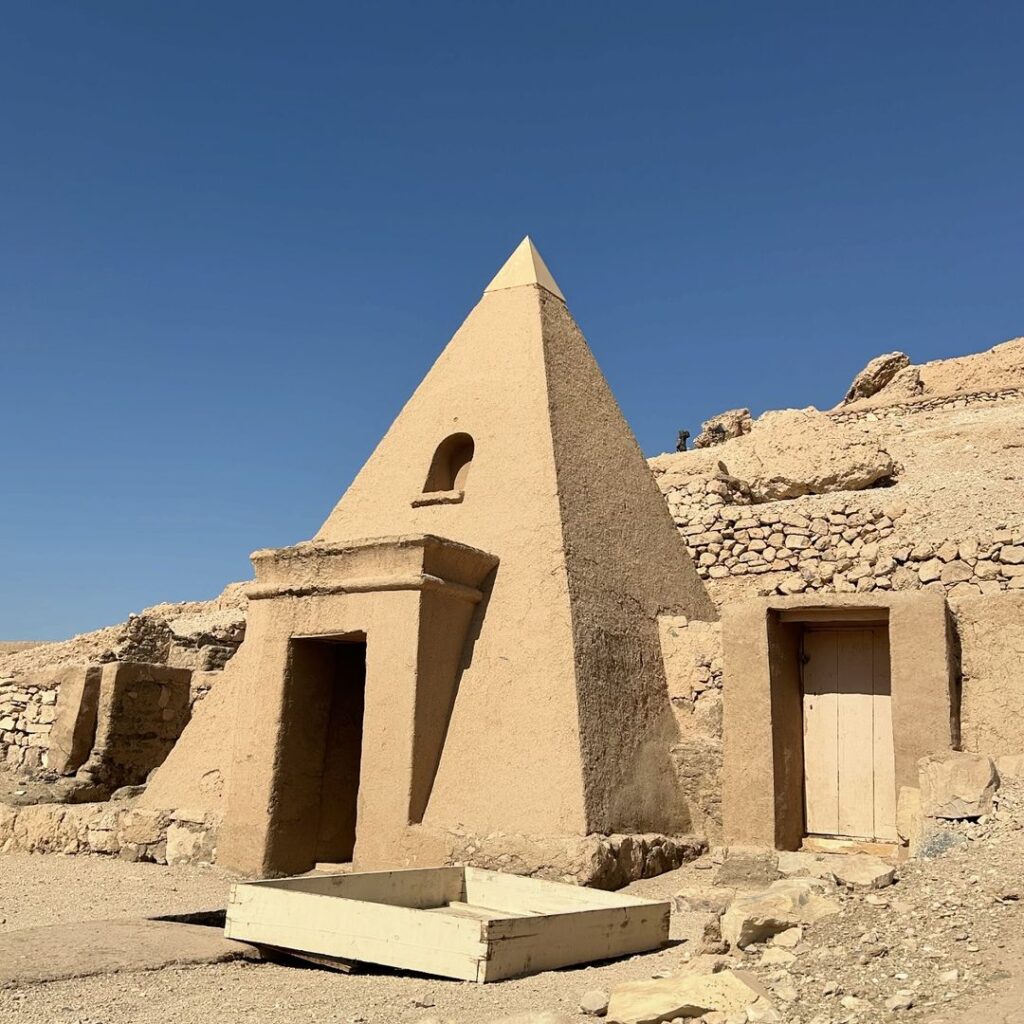
- These tombs, belonging to high-ranking officials and governors of ancient Thebes, are scattered throughout the West Bank.
- We suggest visiting the tombs of Sennofer, adorned with grapevine decorations, and Rekhmire, with its colorful daily life scenes.
- You’ll need to purchase tickets at the West Bank Ticket Office.
Ramesseum
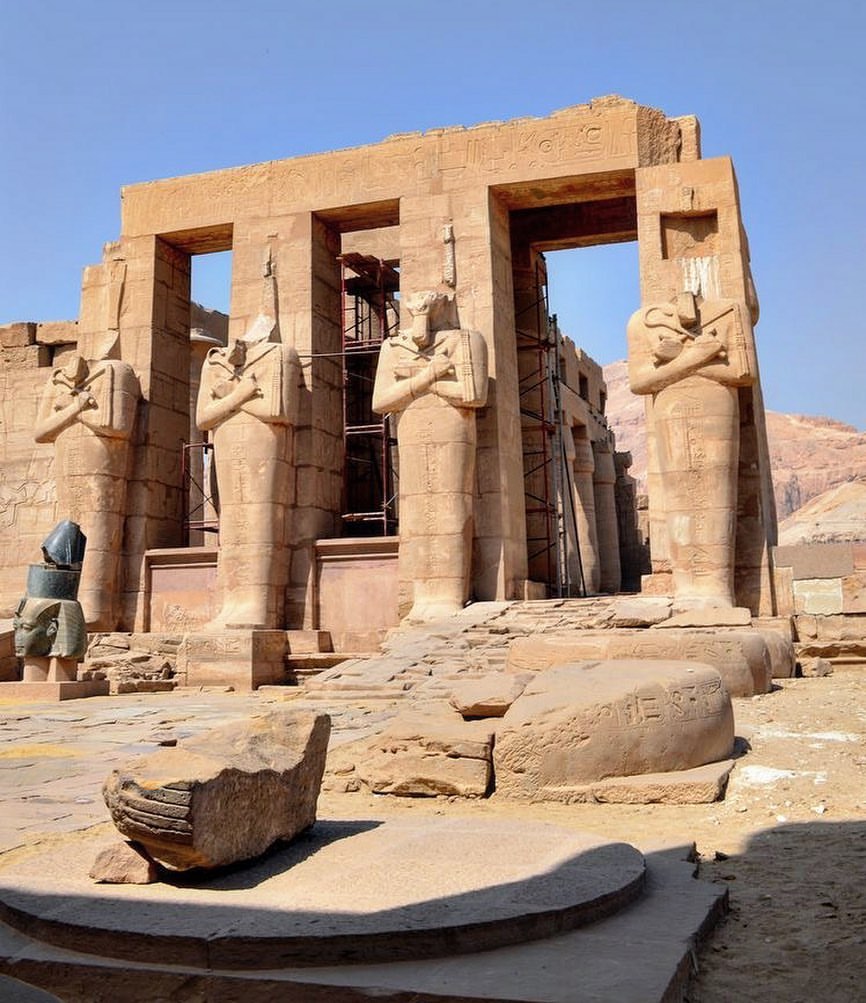
- This ruined mortuary temple, built by Ramses II, once rivaled Karnak in grandeur. Though time has not been kind to the Ramesseum, the colossal head of Ramses still makes an imposing impression.
Temple of Medinet Habu

- One of Luxor’s best-kept secrets, Medinet Habu is a vast complex surrounded by towering mudbrick walls. Inside, the Temple of Amun is covered with stunning reliefs and hieroglyphs, telling stories of military campaigns and religious rituals.
- It’s one of hidden gems in Egypt.
Day 14 – Depart Luxor
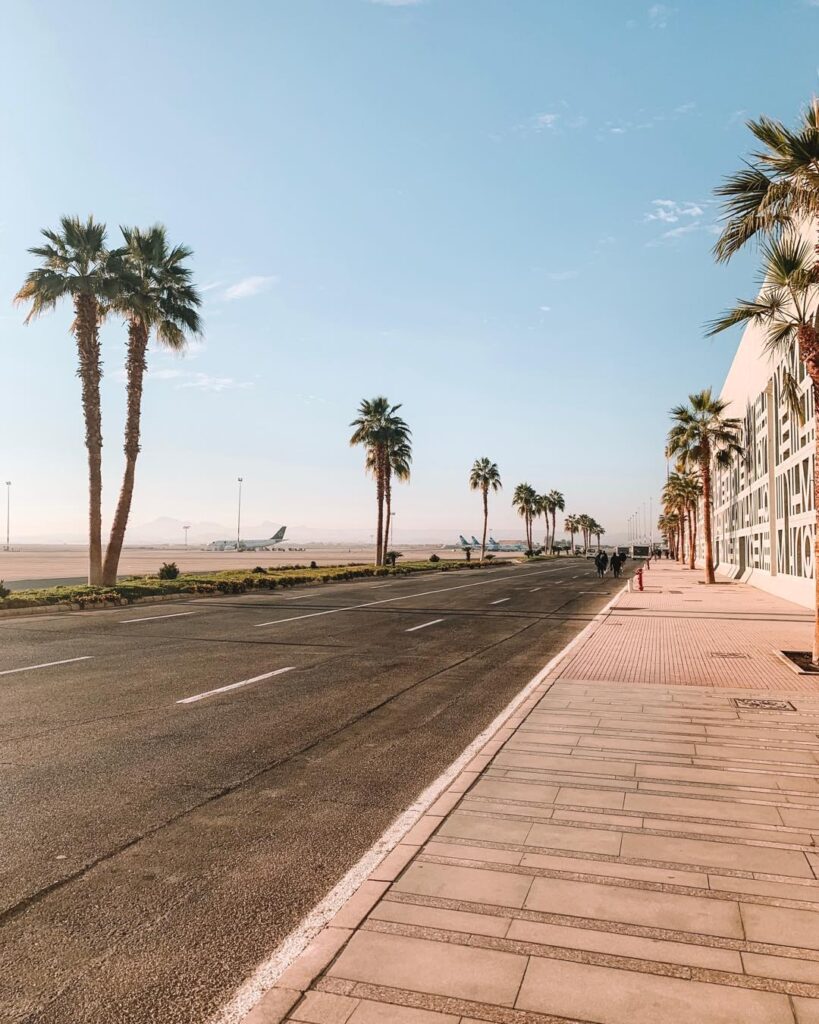
Your two-week adventure through Egypt comes to a close today in Luxor.
If you’re up for one final experience, consider starting the day with a dawn hot air balloon ride over the ancient city.
- You can either fly from Luxor to Cairo for your onward flight or take a day bus back to Cairo (approximately 10 hours).
- Alternatively, Luxor’s airport connects to various international destinations, allowing for an easy departure straight from the ancient city.

![8 Best Restaurants Near Cairo Airport [2025 Updated] 1 Best Restaurants Near Cairo Airport](https://artandthensome.com/wp-content/uploads/2024/04/caiam-evoo-7239-hor-wide-150x150.avif)

![5 Best Nile Cruises [2025 Luxury Sailing] 3 axp photography dZBjJqdi3us unsplash](https://artandthensome.com/wp-content/uploads/2024/12/axp-photography-dZBjJqdi3us-unsplash-1024x683.jpg)
![10 Best Luxury Hotels In Cairo [2025 Updated] 4 Luxury Hotels In Cairo](https://artandthensome.com/wp-content/uploads/2023/10/58107040-150x150.jpg)

